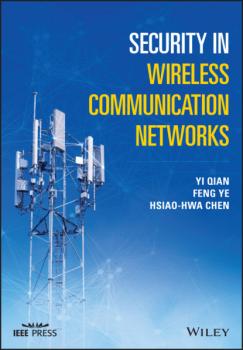ТОП просматриваемых книг сайта:
Yi Qian
Список книг автора Yi QianАннотация
A comprehensive resource that covers all the key areas of smart grid communication infrastructures Smart grid is a transformational upgrade to the traditional power grid that adds communication capabilities, intelligence and modern control. Smart Grid Communication Infrastructures is a comprehensive guide that addresses communication infrastructures, related applications and other issues related to the smart grid. The text shows how smart grid departs from the traditional power grid technology. Fundamentally, smart grid has advanced communication infrastructures to achieve two-way information exchange between service providers and customers. Grid operations in smart grid have proven to be more efficient and more secure because of the communication infrastructures and modern control. Smart Grid Communication Infrastructures examines and summarizes the recent advances in smart grid communications, big data analytics and network security. The authors – noted experts in the field – review the technologies, applications and issues in smart grid communication infrastructure. This important resource: Offers a comprehensive review of all areas of smart grid communication infrastructures Includes an ICT framework for smart grid Contains a review of self-sustaining wireless neighborhood that are network designed Presents design and analysis of a wireless monitoring network for transmission lines in smart grid Written for graduate students, professors, researchers, scientists, practitioners and engineers, Smart Grid Communication Infrastructures is the comprehensive resource that explores all aspects of the topic.
Аннотация
A timely publication providing coverage of radio resource management, mobility management and standardization in heterogeneous cellular networks The topic of heterogeneous cellular networks has gained momentum in industry and the research community, attracting the attention of standardization bodies such as 3GPP LTE and IEEE 802.16j, whose objectives are looking into increasing the capacity and coverage of the cellular networks. This book focuses on recent progresses, covering the related topics including scenarios of heterogeneous network deployment, interference management in the heterogeneous network deployment, carrier aggregation in a heterogeneous network, cognitive radio, cell selection/reselection and load balancing, mobility and handover management, capacity and coverage optimization for heterogeneous networks, traffic management and congestion control. This book enables readers to better understand the technical details and performance gains that are made possible by this state-of-the-art technology. It contains the information necessary for researchers and engineers wishing to build and deploy highly efficient wireless networks themselves. To enhance this practical understanding, the book is structured to systematically lead the reader through a series of case-studies of real world scenarios. Key features: Presents this new paradigm in cellular network domain: a heterogeneous network containing network nodes with different characteristics such as transmission power and RF coverage area Provides a clear approach by containing tables, illustrations, industry case studies, tutorials and examples to cover the related topics Includes new research results and state-of-the-art technological developments and implementation issues



